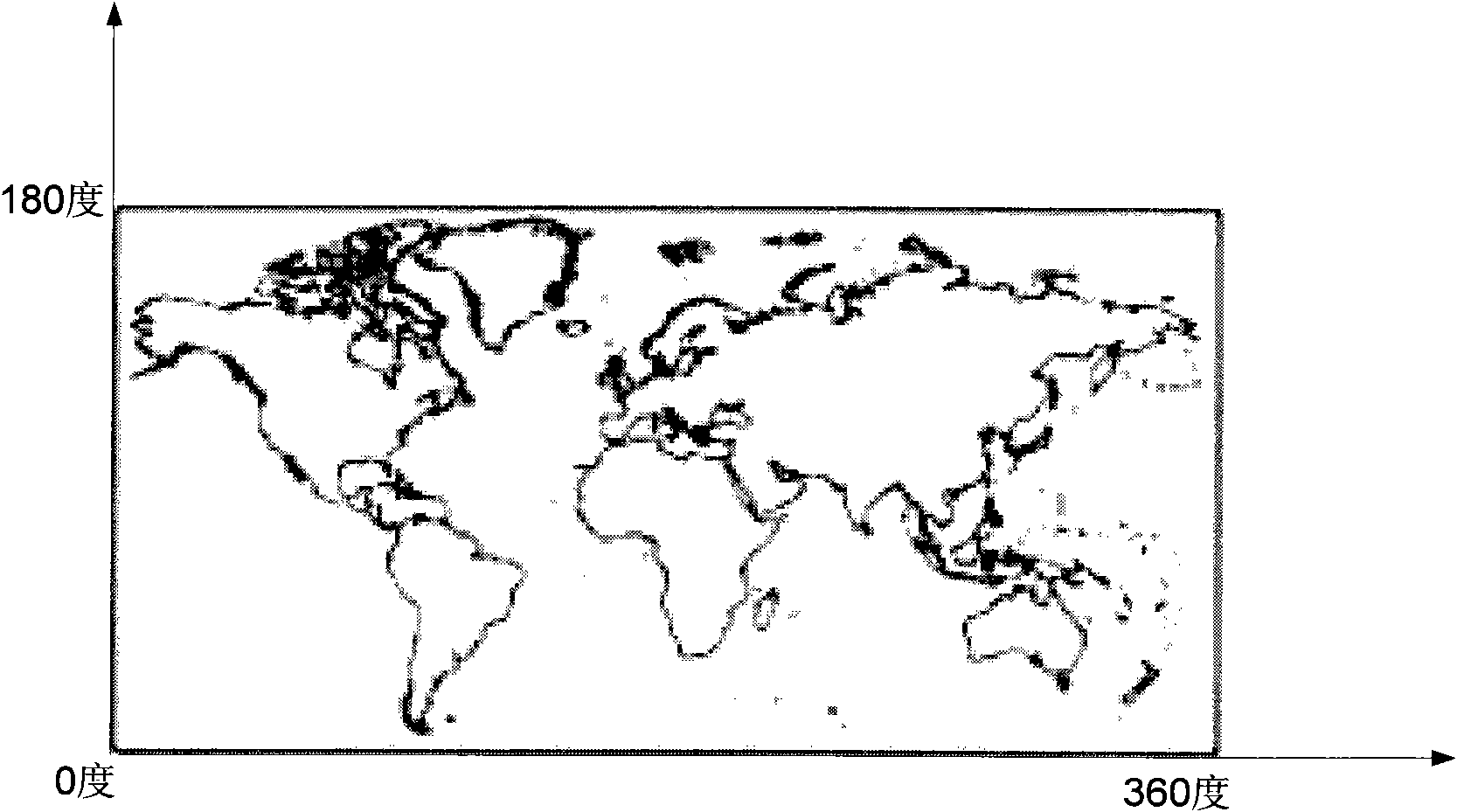Data grading organization method based on longitude and latitude grid
A data classification and grid technology, applied in the field of remote sensing imaging, can solve the problems of loss of precision, large image deformation, large amount of data, etc., and achieve the effects of convenient organization and management, accurate assignment, and simple algorithm
- Summary
- Abstract
- Description
- Claims
- Application Information
AI Technical Summary
Problems solved by technology
Method used
Image
Examples
Embodiment Construction
[0030] The data hierarchical organization method based on latitude and longitude grids of the present invention adopts a 5-layer 15-level block, and each block corresponds to a 1000×1000 image, wherein each layer has three levels, and the levels in the layer are according to 5:2.5 : The size ratio of 1 is arranged in order, and the difference between the layer and the adjacent layer is 10 times. The block size of the first layer is 50°×50°, 25°×25°, 10°×10°, and the second layer is 5° ×5°, 2.5°×2.5°, 1°×1°, and so on for other layers, block such as Figure 3a , 3b and 3c. Compared with World Wind, the present invention does not require such figure 1Projected as shown. And different from the method of World Wind that each block corresponds to a 512*512 image, each block in the present invention corresponds to a 1000*1000 image. The advantage of this segmentation method is that the size of the blocks at each level is a simple finite floating-point number, and the position ca...
PUM
 Login to View More
Login to View More Abstract
Description
Claims
Application Information
 Login to View More
Login to View More - R&D
- Intellectual Property
- Life Sciences
- Materials
- Tech Scout
- Unparalleled Data Quality
- Higher Quality Content
- 60% Fewer Hallucinations
Browse by: Latest US Patents, China's latest patents, Technical Efficacy Thesaurus, Application Domain, Technology Topic, Popular Technical Reports.
© 2025 PatSnap. All rights reserved.Legal|Privacy policy|Modern Slavery Act Transparency Statement|Sitemap|About US| Contact US: help@patsnap.com



